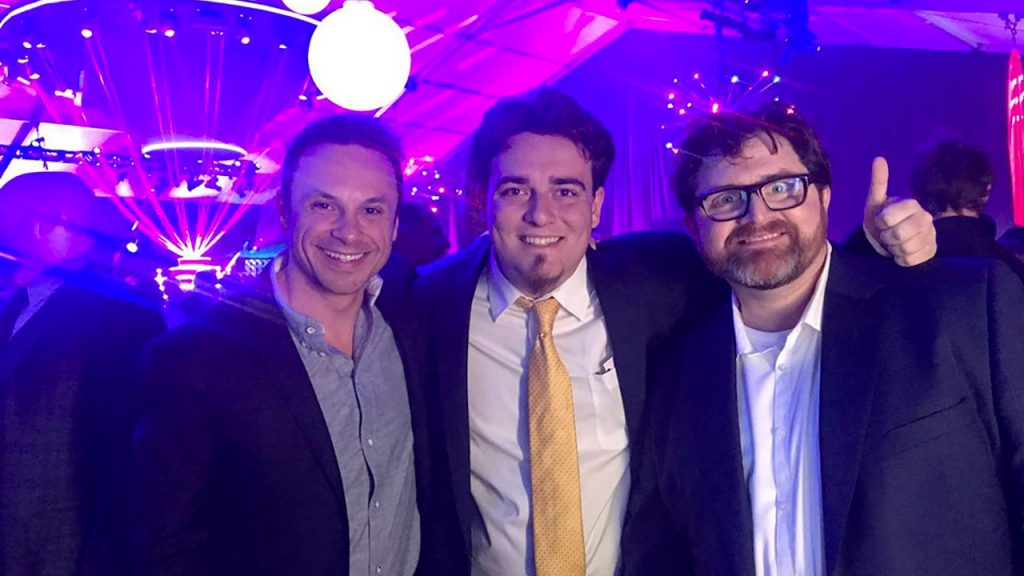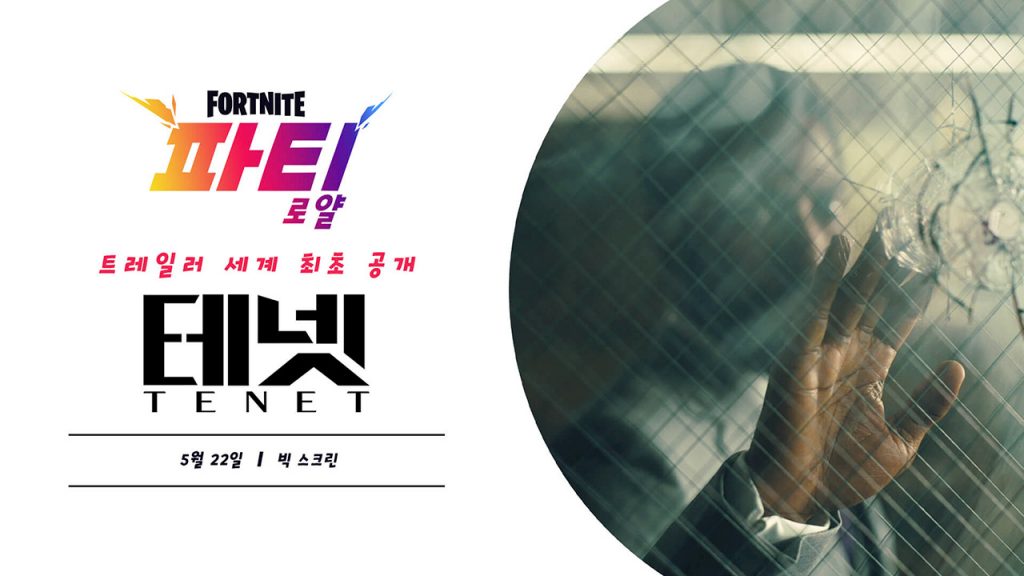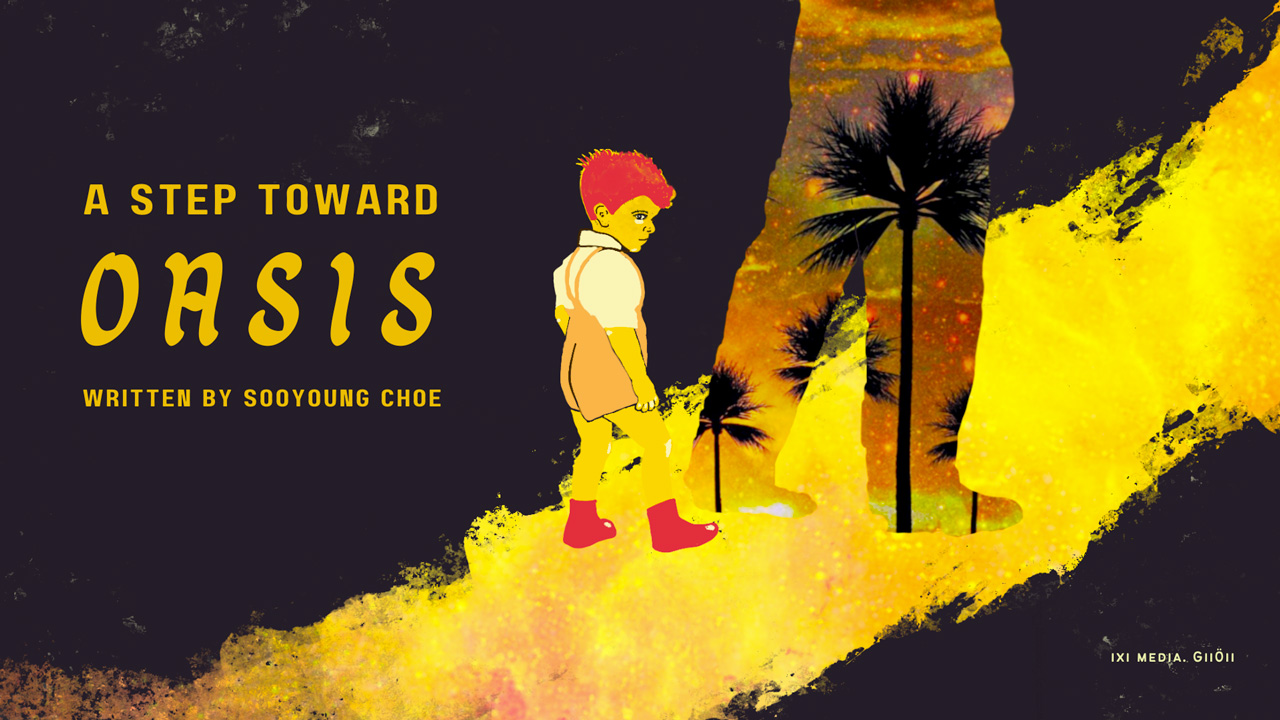“We aim to create a platform like OASIS.” – If you are interested in the XR industry as of 2020, you may have heard this quote at least once, or even said it yourself. Has the concept in a specific novel ever been the aspiration of the industry to this extent? It is not certain if this is the first time, but it is difficult to deny that the novel Ready Player One is the goal of the nascent XR industry.
The concept of virtual reality has been around for a while, but this recurring XR “trend” began in 2014 when Facebook bought the VR headset startup company Oculus for $2 billion. In 2012, around the time Oculus was founded and started Kickstarter funding, the 20-year-old Oculus co-founder Palmer Luckey highly recommended a novel to spread his vision for the future. That novel was Ready Player One, published in 2011. It naturally influenced Facebook founder Mark Zuckerberg when Facebook acquired Oculus. Although he never mentioned OASIS in public, those who have read the novel can easily recognize that his goal is to evolve Facebook into OASIS, the virtual reality service in the novel.
Those two were not the only ones obsessed with OASIS. As if all those who dreamed of XR in Silicon Valley were fascinated by the novel, the OASIS concept gained traction and was well-received by investors. The startup Magic Leap, which set out to create the “retinal projection display (RPD)” that appears in the novel, was already evaluated as a unicorn with a corporate value of over $4.5 billion before the product was even released. Dell named their first VR device Visor, the name of the headset in the novel. Linden Lab, which once drew public attention with a 3D-based social service Second Life launched a new service, Sansar, to provide an experience like that of OASIS. The early founder of Linden Lab Philip Rosedale also unveiled a similar virtual reality service called High Fidelity.

When Steven Spielberg made a movie based on the novel in 2018, the concept of OASIS became popular worldwide, including in Korea. Citing scenes from the movie was the most effective way to pitch XR to unfamiliar investors and policymakers. However, that was all. It was only effective in helping people understand that “if currently developing XR technology is advanced, such things will be possible” and “people may use XR devices like their smartphones someday”. The movie couldn’t tell when the change would happen, and unfortunately neither did the early pioneers of the XR industry who quoted the movie.
The anticipation quickly turned into disappointment. Those who have experienced XR devices that are known to be the best of their time, such as Oculus Quest, HTC Vive, or Samsung Odyssey, realized that those were very different from the virtual reality they have seen in the movie. The picture quality was at the level of the old DVD, the graphics were like a clumsy CGI animation, the controllers were unfamiliar, the motion tracking was unnatural, and the headset was heavy and sweaty, messing up hair and makeup. Above all, there was little consideration for the person wearing the glasses. The early pioneers put all the blame on the devices to keep the investors from backing out.
Afterward, drastically fewer people have talked about what exactly OASIS is, what people can do in it, and how it will be different from the current Internet experience. Instead, the focus has moved to what new devices are being released, how advanced they are, and who made them. Meanwhile, Magic Leap failed, Samsung declared that it won’t make VR devices anymore, and Google officially ended its VR service Daydream, which could be viewed by connecting to a smartphone.
As of October 2020, the “complete device” has not yet been released. Oculus released Oculus Quest2, which improved the performance of existing devices, Microsoft launched Hololens2, and Nreal, HTC, HP, Valve, etc. are also selling new devices. However, a device that is as comfortable 24/7 as a smartphone is yet to come. Some say “Apple will eventually release THE DEVICE”, but it is still uncertain. Do these facts lead us to the conclusion that we won’t be able to know what OASIS is? Is OASIS just a mirage?

Metaverse? Another OASIS
In the year that the movie Ready Player One was released, Epic Games released the online game Fortnite. In Korea, it was treated as a sub-game of Battleground, which was released around the same time, and soon fell away from interest. However, Fortnite set a new annual sales record in the game history in the first year of its release, and became a mega-hit with 350 million people playing globally. Fortnite was especially popular with teenagers, so it began to be used as a marketing channel for products targeting them. For example, Disney actively utilized the Fortnite game during the release of Avengers: Endgame and Star Wars: The Rise of Skywalker. Up until then, Fortnite seemed like a service that had nothing to do with OASIS. It was just one of the common online games and it didn’t support XR devices at all.
However, a media entertainment analyst and investor Matthew Ball wrote an eye-catching article that focused on the potential of Fornite as a metaverse this January. Metaverse is a concept first used in the science fiction novel Snow Crash, published in 1992, referring to “a three-dimensional virtual space where social/economic activities take place as the real world.” Matthew Ball brought up the concept because Epic Games creative director Donald Mustard said at a game awards ceremony that his goal was to “create a Metaverse with Fortnite.” Mustard wanted to evolve Fortnite into space where various social/economic activities could occur, rather than limit it as a playground where battles take place.
The statement became a reality within a few months, as Travis Scott’s Fortnite performance was released in April. A giant Travis Scott character came down from the sky and performed for about 10 minutes as all the wars in Fortnite stopped. 12.3 million people watched this event in real-time, and the song released instantly became the number-one single on the Billboard charts that week. The event in the game had a great influence on the real world. Encouraged by this, Epic Games officially launched a “Party Royale” within Fortnite a month later. “Party Royale” is a mode designed to gather users to watch a movie, performance, or throw a party together. After the launch, Fortnite held events like a party with DJs including Steve Aoki, a trailer world premiere event for Christopher Nolan’s new film Tenet, a Christopher Nolan film screening (Inception in Korea), and a release event of BTS’s “Dynamite Music Video (choreography version)”. It is difficult to know whether the main customer of “Party Royale” is the existing user of Fortnite or the user who has newly installed Fortnite to watch live performances or events. However, if Epic Games is serious about allowing users to engage in various activities in addition to games in their space, and those activities even affect the physical world, is there any reason we should not refer to Fortnite as OASIS?
In fact, OASIS is also initially started as an online game.

The novel Ready Player One explains OASIS as follows.
The OASIS, a massively multiplayer online game that had gradually evolved into the globally networked virtual reality most of humanity now used on a daily basis…A lot of OASIS users didn’t care about their avatar’s power level or bother with the gaming aspect of the simulation at all.
–
The recognition that OASIS in the novel and Metaverse in reality are not different from each other gives a sense of reality to OASIS, which was dismissed as a distant future. OASIS is not an unknown killer app that can be identified only after a state-of-the-art XR device is released, but a state, in which an existing online game evolves into an online platform where diverse activities occur. XR device is not a prerequisite for this trend.
In the past six months, a lot has happened in online game services. To celebrate Children’s day, the Blue House invited children to a virtual Blue House built in Minecraft and left a message from the president. Singer John Legend performed in the form of a 3D animated character in an XR virtual concert service, ‘Wave,’ for the first showcase of his newly released album. He performed live while wearing a motion capture suit and fans watched his animated avatar on YouTube Live. Singer The Weeknd also performed in ‘Wave’ as an animated character, and TikTok broadcasted the performance live. KPOP idols Blackpink held a virtual fansign event in Zepeto also as animated characters. All these events happened without the need for a state-of-the-art XR device.
As people realize that many things can be done in the game space, services that resemble online games but with primary purposes other than gaming have appeared. As a virtual art museum and convention center, MOR(Museum of Other Realities supported this year’s Cannes Film Market to be held in virtual space. In the MOR, people watched the participants’ presentations and held business meetings. The Venice Film Festival moved their events to a virtual space using Viveport and VRChat operated by HTC, and ‘Burning Man’ actively utilized AltspaceVR, owned by Microsoft. As autumn approaches, virtual conferences, exhibitions, and festivals using online games or 3D services similar to online games are starting to appear almost every week around the world.
Global events that were directly affected by limited face-to-face and group contact due to COVID-19 were the first that had to move online, but this experience will allow people to utilize an online game or a similar service in more diverse ways. Users buying and selling goods, creating products or content themselves, and running a company in the virtual space while multiple people connect remotely has already begun to become a reality, in addition to watching movies, sports broadcasts, concerts, holding parties, business meetings, and academic conferences. School classes, meditation, and religious activities in the virtual space described in the novel Ready Player One as everyday life in 2044 have already begun to be part of our lives of 2020. Although it’s not omnipresent, OASIS has definitely become present.

The Beginning of the Competition Toward OASIS
People used to say that they would know what OASIS is only after the invention of the XR device, but in fact, OASIS already exists in the real world. It is obvious that a better device with faster communication speed and improved graphic and data processing unit will eventually be released, enabling more people to use OASIS in the future. So maybe now is the time to delve deeper into OASIS. The movie Ready Player One highlights online game aspects of OASIS, but the novel illustrates how OASIS captivated people around the world and became a major platform, and specifically what activities can be done in the OASIS.
In the upcoming series, we will look more closely at the description of OASIS in the novel Ready Player One and get a clue on how OASIS in our reality will develop, which services will determine its success or failure, which of the existing services is most likely to take the lead, and which elements a latecomer in the market should have.
Ep01. The OASIS, and the Metaverse
Written by Sooyoung Choe
Original article: ixi (Ocr 24, 2020)
Translator: Sohee Kim
Copyeditor: Alex Broadwell
Cover: Mina Hyeon



Leave a Reply
You must be logged in to post a comment.